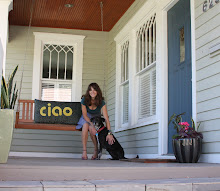
My Tips For This Project:
- Read all of the comments about this project on the Spool website. There are really great tips about crafting the birds including how to stuff them, how to get them to sit upright, how to attach them to the twigs, and how to string up the mobile.
- I don't know if I would consider this a sewing project for a new sewer, as the pieces of fabric are very tiny to work with and you need to be good at holding the fabric close to the machine needles while sewing around a curve to make the birds. Also there is an intersecting seam in the pattern where the bird breast fabric meets the bird body fabric. This can be tricky too, so don't get discouraged if it takes a couple stabs at the bird to actually get one that looks good.
This project cost less than $5 since we already had the scrap fabrics and the twigs came from a Crepe Myrtle tree in my yard. The only things needed were some fishing line and some small eye hooks. This project was completed in 5 hours.
The birdie pillow I made for the glider in Marin's room was inspired by a bird pillow for sale at Land of Nod. The pillow only came in orange, which did not work in Marin's room, so I drew a pattern and made one from the room fabrics.
In the spirit of Spool's free bird mobile pattern, here is my hand drawn pattern for this pillow. You should be able to save it, print it and enlarge it to your desired size to make your own. The above pictured pillow size is about 12" tall by 17" from beak to tail, but you can enlarge the pattern to create whatever size suits you.

- Cut 2 body pieces from desired fabric.
- Cut two wing pieces from different fabric.
- Position the wing on each body panel and use small piece of fusible web to hold the pieces in place while you zig-zag applique stitch around edge of wing.
- Cut 2 small orange triangles from wool felt or other fabric and 2 white eye ovals and 2 black eye pupils from felt. Position eyes and beak on each side of bird body panels and zig-zag applique in coordinating colored thread.
- Pin two body panels right sides together and stitch around leaving bottom open about 4 inches to stuff.
- Clip curves and turn right side out. Press, fill to desired fullness and slip-stitch bottom closed.
This birdie cost less than $5 because we used fabric scraps and only needed some Poly-fil. It took 2 hours to make this pillow.






